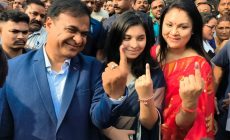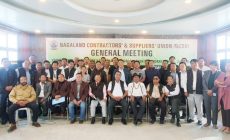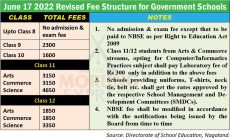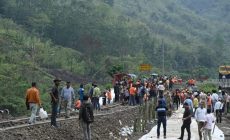Issued by MIP, NSCN/GPRN | Nov 11, 2020
From day one when the Indo-Naga political talks took off after the 1997 Indo-Naga ceasefire, our hon’ble Ato Kilonser Mr. Th. Muivah who is the Chief Negotiator leave no stone unturned to assert the Naga political identity as a nation. In the following years as the talk progress he proved his point on enumerable occasions to clinch his argument to project the Naga peoples’ stand from the historical and political perspective. He made things very clear before the Indian Representatives that small and weak they may be, the Nagas are also a unique nation among nations. It took five years for the Government of India to officially give recognition to the unique history of the Naga people on July 11, 2002.
If we go through the world history of various nations we know that all nation-states are built on the foundation of their respective unique histories. But there are some nations who have sold out their history to the given dominant power by consent. In the case of Nagas, they have been free from time immemorial. Of course, there were internecine fighting between the sovereign Naga village states and their neighbouring peoples and nations. In the meantime, the British imperialist forces intruded into Naga country and occupied some parts of Naga territory. The rest of the Naga territories remain as free as ever.
On the eve of the lapse of British power, the Nagas declared their independence on 14th August, 1947, one day ahead of India’s declaration of independence. Four years later the Indian Constituent Assembly invited the Nagas to join the Union of India, but it was rejected. Thereafter, the Indian Congress government headed by the then Prime Minister Mr. Jawaharlal Nehru sent hundreds of thousands of Indian Armed Forces personnel to the Naga country to subdue the Nagas by military might where over three hundreds thousands Nagas were killed- or some butchered, some burnt alive, some raped to death and some were tortured to death. They destroyed villages including schools, colleges, churches, granaries and financial resources. It was the most appalling human rights violation not seen elsewhere in the world.
Applying carrot and stick policy, the Government of India created the so-called Nagaland state within the parameters of Indian Constitution, embracing a few Nagas and a small part of Naga territory with a view to divide the Nagas and subdue the Nagas. Naga people, however, exercised their political consciousness to stand the ground and the creation of Nagaland state was condemned and rejected by the Naga National Assembly. The situation, however, developed from bad to worse.
As compelled by the situation, ceasefire agreement was signed on 6th September, 1964 before the ink of the so-called 16-Point Agreement was dried. However, this hard earned ceasefire broke after the talk ended abruptly after six rounds of talks on account of the rigid stand taken by Indian government to adhere to their colonial design. The armed confrontations started all over again as Naga people refused to be cowed down despite being driven to dangerous brinkmanship.
A decade later, the so-called infamous Shillong Accord under the Indian constitution was imposed. But that could not stop the fighting. Fighting broke out within no time. This was not surprising because the accord was not issue-based. A few months later the Shillong Accord was condemned by the Naga National Assembly.
After 22 years of bloody confrontations, a Ceasefire agreement between the Government of India (GoI) and NSCN (National Socialist Council of Nagaland) was signed and declared on the 1st August, 1997 to begin political talk at the Prime Minister level. In the negotiations that went through six prime ministers of India, the stand of the Government of India was solution within the parameter of Indian constitution and Union of India, whereas the stand of the Nagas was nothing short of total independence and total sovereignty. Nevertheless, it was mutually agreed to work out a meeting point.
Finally, the turning point came when the historic Framework Agreement was officially signed on 3rd August, 2015 under the watchful eyes of the whole world. The Framework Agreement was brought about because NSCN negotiators handled the Naga political issue with calm dignity and unflinching courage. This agreement reaffirmed the recognised unique history of the Nagas and identity of the Nagas. It recognizes the sovereignty of the Nagas and the thus the political identity of the Naga people was established with clinical conviction. It is in the fitness of keeping pace with the contemporary reality that the agreement recognised the political exigency of the Nagas and Indians for peaceful coexistence of the two entities which means two people/nations.
Based on this Framework Agreement we have mutually agreed that Nagas will exercise their sovereignty in their own internal affairs. However, there are areas where the two entities will share sovereign powers. Agreement also says that Nagas are the owners of their land and all natural and mineral resources above and beneath the land belong to the Nagas.
Significantly, the Government of India has also recognised the legitimate right of the Nagas to integration of all Naga territories. Road map has been worked out for its materialization through political process. And that kind of political set up with legislative, executive, and financial (separate budget) and judicial powers will be created which will be transitional. Pan Naga Hoho, a cultural and social body with a separate budget allocated by the Government of India will also be created.
With regards to the contentious issue of Naga flag and Yehzabo (constitution), it was unbecomingly unfortunate that some leaders from the Indian side are making issue out of it. Indeed, flag and constitution are the inherent characteristics of our recognized sovereignty and identity. Notwithstanding the stand of the Government of India on Naga flag and constitution that is wildly vacillating, it is needless to say that NSCN will stick to Framework Agreement and mutually agreed competencies including Naga national flag and constitution. All along, the Nagas have been looking for lasting solution and lasting relationship by mutual agreement. Nagas do not believe in forced marriage and force union.
Therefore, we strongly believe and we can assuredly say that Naga solution incorporating Naga flag and constitution will undoubtedly solve not only the Naga political problem, but it will also solve the chronic Indo-Naga political problem and they will tighten their lasting relationship. Therefore, given this unequivocal geo-strategic position occupied by the Nagas, both the parties should focus on long term solution that will give no room for future war but bring a genuine and lasting peace in the land. Let this be known to all.






 An orbiting message of peace
An orbiting message of peace The Top Viral YouTube Videos of 2017
The Top Viral YouTube Videos of 2017 The last Konyak headhunters of Nagaland
The last Konyak headhunters of Nagaland What Does Your Face Say About Your Health?
What Does Your Face Say About Your Health?










Leave a Reply
Your email address will not be published. Required fields are marked (required)